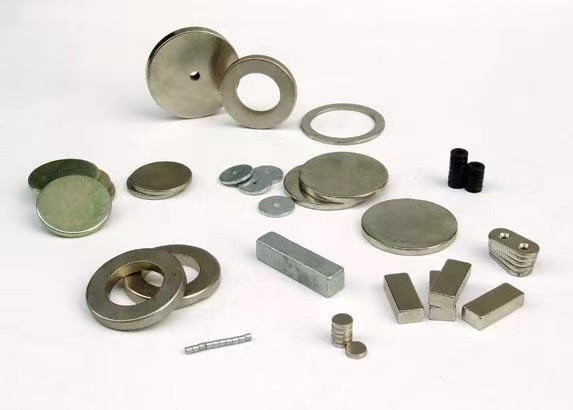How NdFeB magnets work, function and application range
NdFeB magnets were invented in the early 1980s, and as of 2009, are the strongest permanent magnets available. Their strength, small size, and low cost have enabled many advancements in personal audio, electric motors, and other fields.
NdFeB magnets are made from an alloy called NIB – neodymium, iron and boron. They belong to rare earth magnets, that is, metal magnets made of rare earth elements. The arrangement of electrons in rare earth elements causes them to generate strong magnetic fields. Rare earth elements are expensive, but the magnetic field is so strong that you can make magnets very small. Smaller magnets end up being cheaper.
Like other strong magnetic materials, NIBs are brittle, so magnets get a protective coating of a stronger metal (like nickel) or a more elastic material (like plastic).
Currently, NIB magnets are available in a range of strength grades, from the lowest N35 to N52. A magnet rated N45 will have a magnetic field of 1.25 Tesla. This is close to the magnetic force of medical MRI, which requires a special metal-free room. NMR has a magnet that operates at about 3 Tesla.
All ferromagnetic materials lose their magnetism when heated; the temperature at which they lose their magnetism is called the Curie point. Neodymium magnets lose strength between 80 degrees Celsius and 230 degrees Celsius, depending on the grade. While this is above room temperature (25 degrees Celsius), it is lower than many other magnetic materials.
NIB magnets make in-ear headphones possible. In order for tiny headphones to handle enough power to sound good, the magnets in audio transducers need strong magnetic fields. While headphones were around before neodymium magnets, they were not designed for high-fidelity listening. The small size and good fidelity of the earbuds helped the MP3 player phenomenon succeed.
Hobbyists have used NIB magnets for a variety of purposes. They are fastened to a steel shelf that can hold knives and tools. They are used in the couplers of model train cars. Electric motors improved with NIB magnets are replacing internal combustion engines in model airplanes, boats and cars.
Stronger grades of NIB magnets have some dangers worth knowing about. Two of them can attract each other with enough force to break themselves, or if your hand is blocking your fingers. If swallowed, the two magnets can pinch the digestive tract, causing pain and serious injury. Strong magnetic fields can interfere with pacemakers. They are also strong enough to erase magnetic stripes on floppy disks or credit cards. Larger NIB magnets cannot be airlifted because they interfere with the aircraft’s navigation compass.



